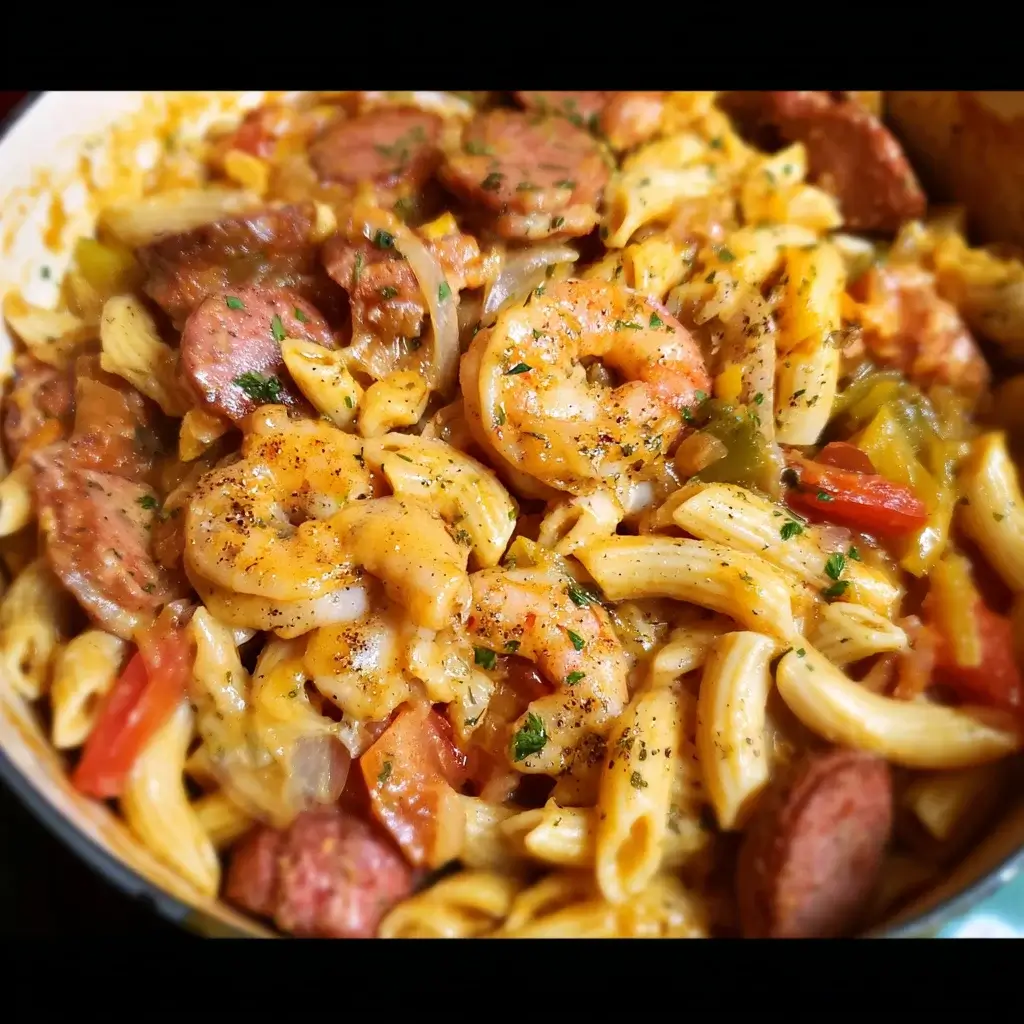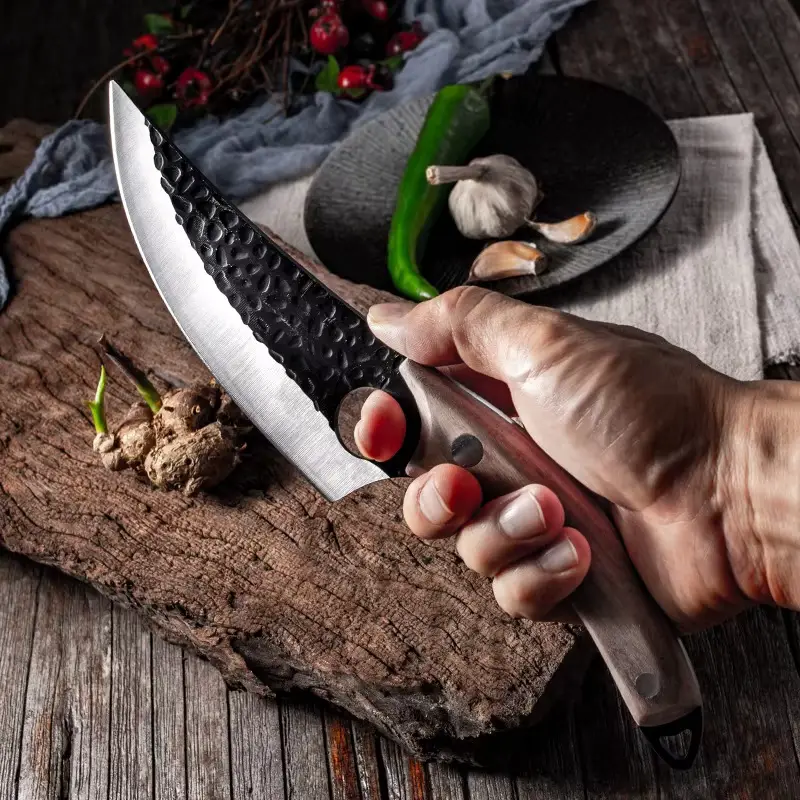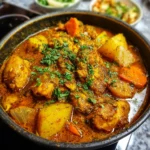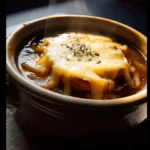Some recipes are just meals; others are events. This Jambalaya Pasta firmly belongs in the latter category. I’ll never forget the first time I made it. I was hosting a casual get-together with friends and wanted to cook something with a “wow” factor that didn’t chain me to the stove all night. I had always loved the bold, spicy, and soulful flavors of traditional Jambalaya, but the idea of marrying it with pasta felt both rebellious and brilliant. As the holy trinity of onion, bell pepper, and celery hit the hot pan sizzling with rendered Andouille sausage fat, my entire apartment was enveloped in an aroma that was intoxicatingly complex—savory, spicy, and deeply aromatic. My friends, who were chatting in the living room, fell silent and one by one, drifted into the kitchen, drawn in by the smell. The final dish was a masterpiece of flavor and texture. The pasta, coated in a creamy, spicy tomato sauce, was the perfect vehicle for the tender chunks of chicken, the smoky coins of sausage, and the succulent, perfectly cooked shrimp. It was rich but not heavy, spicy but not overpowering, and utterly, compulsively delicious. That night, there were no leftovers. The pot was scraped clean, and the recipe was immediately requested by everyone. It has since become my signature dish for gatherings, a guaranteed crowd-pleaser that brings the vibrant, celebratory spirit of New Orleans right to my dinner table.
Complete Ingredients with Amounts
This recipe is all about layering flavors. Each ingredient plays a crucial role in building the final, complex taste. Using quality proteins and fresh vegetables will elevate the dish from good to unforgettable.
For the Proteins and Marinade:
- Boneless, Skinless Chicken Breasts: 1 lb (450g), cut into 1-inch cubes. Thighs can also be used for extra flavor and moisture.
- Andouille Sausage: 12 oz (340g), smoked. This is a spicy Cajun pork sausage. If you can’t find it, a good quality smoked Kielbasa or spicy Italian sausage is a decent substitute. Sliced into 1/4-inch thick rounds.
- Large Raw Shrimp: 1 lb (450g), peeled and deveined, tails on or off as preferred.
- Olive Oil: 1 tablespoon.
- Cajun or Creole Seasoning: 3 tablespoons, divided. Use a good quality store-bought blend (like Tony Chachere’s or Slap Ya Mama) or make your own.
For the “Holy Trinity” and Aromatics:
- Yellow Onion: 1 large, finely chopped.
- Green Bell Pepper: 1 large, finely chopped.
- Celery: 2 stalks, finely chopped.
- Garlic: 4-6 cloves, minced.
For the Creamy Cajun Sauce:
- Unsalted Butter: 2 tablespoons.
- All-Purpose Flour: 2 tablespoons. This will create a light roux to thicken the sauce.
- Diced Tomatoes: 1 can (14.5 oz / 411g), undrained. Fire-roasted tomatoes add a wonderful smoky depth.
- Chicken Broth: 2 cups (480ml), low-sodium.
- Worcestershire Sauce: 1 tablespoon. Adds a deep umami flavor.
- Heavy Cream: 1 cup (240ml). This is essential for the rich, creamy texture that balances the spice.
- Tomato Paste: 1 tablespoon. For an extra concentrated tomato flavor.
- Dried Thyme: 1 teaspoon.
- Smoked Paprika: 1 teaspoon.
- Cayenne Pepper: 1/4 to 1/2 teaspoon, or to taste. This is where you control the heat.
- Salt and Freshly Ground Black Pepper: To taste.
For the Pasta and Garnish:
- Pasta: 1 lb (450g) of fettuccine, linguine, or penne. A long pasta like fettuccine is great for clinging to the sauce, while penne catches the sauce in its tubes.
- Fresh Parsley: 1/4 cup, chopped, for garnish.
- Green Onions (Scallions): 1/4 cup, thinly sliced, for garnish.
Step-by-Step Instructions
Follow these steps methodically to build the layers of flavor that make this dish so special. The key is to take your time browning the meats and sautéing the vegetables to develop a deep, savory base.
Part 1: Prepare the Proteins and Pasta
- Marinate the Chicken: In a medium bowl, toss the cubed chicken with 1 tablespoon of olive oil and 1 tablespoon of the Cajun seasoning. Set aside to marinate while you prepare the other ingredients.
- Cook the Pasta: Bring a large pot of heavily salted water to a rolling boil. Add the pasta and cook according to package directions until al dente (firm to the bite). Just before draining, reserve about 1 cup of the starchy pasta water. Drain the pasta and set it aside.
- Prep the Shrimp: While the pasta cooks, pat the peeled and deveined shrimp dry with paper towels. In a separate bowl, toss the shrimp with 1/2 tablespoon of Cajun seasoning. Set aside.
Part 2: Build the Flavor Base
- Sear the Sausage: In a large Dutch oven or a heavy-bottomed pot, cook the sliced Andouille sausage over medium-high heat for 5-7 minutes, stirring occasionally, until it is nicely browned and the fat has rendered. Use a slotted spoon to remove the sausage from the pot and set it aside on a plate. Do not wipe out the pot; the rendered fat is packed with flavor.
- Cook the Chicken: Add the marinated chicken to the same pot in a single layer. Cook for 3-4 minutes per side, without moving it too much, until golden brown and cooked through. Remove the chicken with the slotted spoon and add it to the plate with the sausage.
- Sauté the Holy Trinity: Reduce the heat to medium. Add the chopped onion, bell pepper, and celery to the pot. Sauté for 6-8 minutes, stirring occasionally and scraping up any browned bits (the fond) from the bottom of the pot with a wooden spoon. The vegetables should be soft and translucent.
- Bloom the Aromatics: Add the minced garlic, 1 tablespoon of tomato paste, 1 teaspoon of dried thyme, 1 teaspoon of smoked paprika, and the desired amount of cayenne pepper to the pot. Cook for 1-2 minutes more, stirring constantly, until the garlic is fragrant and the tomato paste has deepened in color. This step, known as blooming, intensifies the flavor of the spices.
Part 3: Create the Creamy Sauce
- Make the Roux: Add the 2 tablespoons of butter to the pot with the vegetables. Once melted, sprinkle the 2 tablespoons of all-purpose flour over the top. Cook, stirring constantly, for about 1 minute to cook out the raw flour taste. This light roux will help thicken the sauce.
- Deglaze and Simmer: Slowly pour in the 2 cups of chicken broth, whisking constantly to ensure the roux dissolves smoothly without lumps. Add the can of diced tomatoes (with their juices) and the 1 tablespoon of Worcestershire sauce. Bring the mixture to a simmer.
- Thicken the Sauce: Reduce the heat to low, cover the pot, and let the sauce simmer gently for 15 minutes to allow the flavors to meld and the sauce to thicken slightly.
- Add the Cream: Stir in the 1 cup of heavy cream and the remaining 1.5 tablespoons of Cajun seasoning. Let the sauce gently heat through for 2-3 minutes, but do not let it come to a full boil. Taste the sauce and adjust with salt and black pepper as needed.
Part 4: Combine and Finish the Dish
- Return Meats to the Pot: Add the cooked sausage and chicken back into the pot with the creamy sauce. Stir to combine and allow them to heat through for a couple of minutes.
- Cook the Shrimp: Add the seasoned raw shrimp to the sauce. Cook for just 2-3 minutes, stirring gently, until they are pink, opaque, and curled. Be careful not to overcook the shrimp, as they will become tough and rubbery.
- Combine with Pasta: Add the cooked and drained pasta directly to the pot. Using tongs, toss everything together gently until the pasta is well-coated in the glorious sauce. If the sauce seems too thick, add a splash of the reserved pasta water to loosen it to your desired consistency.
- Garnish and Serve: Turn off the heat. Stir in half of the chopped fresh parsley and green onions. Serve immediately in large bowls, garnished with the remaining parsley and green onions.
Nutrition Facts
- Servings: 6-8 generous portions
- Calories per serving (approximate): 700-900 kcal
Disclaimer: This is a hearty and indulgent dish. The nutritional information is an estimate and can vary significantly based on the type of sausage used, the fat content of the cream, and the exact portion size.
Preparation Time
Mise en place (prepping all your ingredients before you start cooking) is highly recommended for this recipe to ensure a smooth cooking process.
- Active Preparation Time: 25 minutes (chopping vegetables, cubing chicken, etc.)
- Cook Time: 45 minutes
- Total Time: Approximately 1 hour and 10 minutes
How to Serve
Jambalaya Pasta is a complete meal in itself, but serving it with the right accompaniments can turn it into a true feast.
- Garnishes are Key:
- Freshness: A generous sprinkle of fresh, finely chopped parsley and thinly sliced green onions is non-negotiable. They add a burst of fresh, vibrant flavor that cuts through the richness of the sauce.
- Cheese: While not traditional, a sprinkle of freshly grated Parmesan cheese can add a salty, nutty note that many people enjoy.
- Extra Heat: For those who love spice, serve with a side of your favorite Louisiana-style hot sauce.
- Essential Side Dishes:
- Garlic Bread: A warm, crusty loaf of garlic bread is the perfect tool for sopping up every last bit of the delicious sauce from the bottom of the bowl.
- Simple Green Salad: A light, crisp green salad with a simple vinaigrette provides a refreshing contrast to the rich and creamy pasta. Think romaine lettuce, cucumber, and a light lemon-based dressing.
- Cornbread: A slice of sweet, crumbly cornbread on the side is a wonderful Southern-inspired accompaniment.
- Perfect Drink Pairings:
- Beer: A crisp, cold lager or a hoppy IPA (India Pale Ale) stands up well to the spicy and bold flavors of the dish.
- Wine: For wine lovers, a dry, acidic white wine like a Sauvignon Blanc can cut through the creaminess, while a low-tannin, fruity red like a Zinfandel can complement the smokiness of the sausage.
Additional Tips (5 Tips)
- Master the Art of the Fond: The “fond” refers to the browned bits of meat and spices that get stuck to the bottom of the pot after searing the sausage and chicken. This is not burnt food; it is concentrated flavor gold! When you add the vegetables and later the chicken broth, make sure you use a wooden spoon to scrape all of these bits up, dissolving them into the sauce. This single step adds incredible depth and complexity to the dish.
- Control the Spice Level: Cajun food is known for its heat, but you can easily tailor this recipe to your preference. The heat comes from two main sources: the Andouille sausage and the cayenne pepper/Cajun seasoning. If you are sensitive to spice, choose a milder smoked sausage like Kielbasa and start with only 1/4 teaspoon of cayenne pepper. You can always add more at the end or serve hot sauce on the side.
- Don’t Overcook the Shrimp: Shrimp cook incredibly quickly. They are done the moment they turn from translucent gray to opaque pink. This typically takes only 2-3 minutes in the hot sauce. Add them at the very end of the cooking process to ensure they are tender and succulent. Overcooked shrimp become tough and rubbery.
- Harness the Power of Pasta Water: That cloudy water left over after boiling your pasta is liquid gold. It’s full of starch, which acts as an emulsifier and thickener. If your final sauce is a bit too thick, a splash of pasta water will loosen it more effectively than plain water, helping the sauce cling to the pasta beautifully for a silkier finish.
- Use Full-Fat Heavy Cream: This is not the place to substitute with milk or half-and-half. The high-fat content of heavy cream is what gives the sauce its luxurious, velvety texture and prevents it from curdling when it combines with the acidic tomatoes. It’s essential for achieving the rich, balanced flavor that defines this dish.
Frequently Asked Questions (FAQ)
1. What is the difference between Cajun and Creole seasoning?
While often used interchangeably, there is a subtle difference. Creole cuisine is often considered more “city food” with European influences and typically includes tomatoes. Cajun cuisine is more rustic “country food.” In terms of seasonings, Creole blends often include more herbs like paprika, oregano, and thyme, while Cajun seasoning tends to be more focused on a blend of peppers (black, white, cayenne) and garlic. For this recipe, either will work wonderfully.
2. Can I make this dish with different proteins or make it vegetarian?
Absolutely. This recipe is very adaptable. You can swap the chicken for turkey or use a different type of sausage. For a seafood version, add scallops or mussels along with the shrimp. To make it vegetarian, omit the meat and shrimp and use a plant-based sausage. Bulk up the dish with more vegetables like mushrooms, zucchini, or corn. Use vegetable broth instead of chicken broth.
3. Can I make Jambalaya Pasta ahead of time?
You can, but it’s best when served fresh. Cream-based pasta sauces can thicken and separate slightly upon reheating. If you need to make it ahead, cook the entire dish but leave out the pasta and shrimp. When ready to serve, gently reheat the sauce, cook the shrimp and pasta fresh, and then combine everything. Leftovers can be stored in an airtight container in the refrigerator for up to 3 days. Reheat gently on the stovetop with a splash of milk or broth to loosen the sauce.
4. Is this a true one-pot meal?
While most of the cooking happens in one large pot, you will need a separate pot to boil the pasta. Some recipes suggest cooking the pasta directly in the sauce, but doing so separately gives you more control over the pasta’s texture (ensuring it’s perfectly al dente) and the sauce’s final consistency.
5. Can this recipe be made gluten-free?
Yes, it can easily be adapted for a gluten-free diet. First, use your favorite gluten-free pasta and cook it according to its specific package directions. Second, to thicken the sauce, substitute the all-purpose flour with a gluten-free all-purpose blend or create a cornstarch slurry (mix 1 tablespoon of cornstarch with 2 tablespoons of cold water) and add it to the simmering sauce to thicken. Also, ensure your Cajun seasoning blend and sausage are certified gluten-free.

Jambalaya Pasta recipe
Ingredients
For the Proteins and Marinade:
-
Boneless, Skinless Chicken Breasts: 1 lb (450g), cut into 1-inch cubes. Thighs can also be used for extra flavor and moisture.
-
Andouille Sausage: 12 oz (340g), smoked. This is a spicy Cajun pork sausage. If you can’t find it, a good quality smoked Kielbasa or spicy Italian sausage is a decent substitute. Sliced into 1/4-inch thick rounds.
-
Large Raw Shrimp: 1 lb (450g), peeled and deveined, tails on or off as preferred.
-
Olive Oil: 1 tablespoon.
-
Cajun or Creole Seasoning: 3 tablespoons, divided. Use a good quality store-bought blend (like Tony Chachere’s or Slap Ya Mama) or make your own.
For the “Holy Trinity” and Aromatics:
-
Yellow Onion: 1 large, finely chopped.
-
Green Bell Pepper: 1 large, finely chopped.
-
Celery: 2 stalks, finely chopped.
-
Garlic: 4-6 cloves, minced.
For the Creamy Cajun Sauce:
-
Unsalted Butter: 2 tablespoons.
-
All-Purpose Flour: 2 tablespoons. This will create a light roux to thicken the sauce.
-
Diced Tomatoes: 1 can (14.5 oz / 411g), undrained. Fire-roasted tomatoes add a wonderful smoky depth.
-
Chicken Broth: 2 cups (480ml), low-sodium.
-
Worcestershire Sauce: 1 tablespoon. Adds a deep umami flavor.
-
Heavy Cream: 1 cup (240ml). This is essential for the rich, creamy texture that balances the spice.
-
Tomato Paste: 1 tablespoon. For an extra concentrated tomato flavor.
-
Dried Thyme: 1 teaspoon.
-
Smoked Paprika: 1 teaspoon.
-
Cayenne Pepper: 1/4 to 1/2 teaspoon, or to taste. This is where you control the heat.
-
Salt and Freshly Ground Black Pepper: To taste.
For the Pasta and Garnish:
-
Pasta: 1 lb (450g) of fettuccine, linguine, or penne. A long pasta like fettuccine is great for clinging to the sauce, while penne catches the sauce in its tubes.
-
Fresh Parsley: 1/4 cup, chopped, for garnish.
-
Green Onions (Scallions): 1/4 cup, thinly sliced, for garnish.
Instructions
Part 1: Prepare the Proteins and Pasta
-
Marinate the Chicken: In a medium bowl, toss the cubed chicken with 1 tablespoon of olive oil and 1 tablespoon of the Cajun seasoning. Set aside to marinate while you prepare the other ingredients.
-
Cook the Pasta: Bring a large pot of heavily salted water to a rolling boil. Add the pasta and cook according to package directions until al dente (firm to the bite). Just before draining, reserve about 1 cup of the starchy pasta water. Drain the pasta and set it aside.
-
Prep the Shrimp: While the pasta cooks, pat the peeled and deveined shrimp dry with paper towels. In a separate bowl, toss the shrimp with 1/2 tablespoon of Cajun seasoning. Set aside.
Part 2: Build the Flavor Base
-
Sear the Sausage: In a large Dutch oven or a heavy-bottomed pot, cook the sliced Andouille sausage over medium-high heat for 5-7 minutes, stirring occasionally, until it is nicely browned and the fat has rendered. Use a slotted spoon to remove the sausage from the pot and set it aside on a plate. Do not wipe out the pot; the rendered fat is packed with flavor.
-
Cook the Chicken: Add the marinated chicken to the same pot in a single layer. Cook for 3-4 minutes per side, without moving it too much, until golden brown and cooked through. Remove the chicken with the slotted spoon and add it to the plate with the sausage.
-
Sauté the Holy Trinity: Reduce the heat to medium. Add the chopped onion, bell pepper, and celery to the pot. Sauté for 6-8 minutes, stirring occasionally and scraping up any browned bits (the fond) from the bottom of the pot with a wooden spoon. The vegetables should be soft and translucent.
-
Bloom the Aromatics: Add the minced garlic, 1 tablespoon of tomato paste, 1 teaspoon of dried thyme, 1 teaspoon of smoked paprika, and the desired amount of cayenne pepper to the pot. Cook for 1-2 minutes more, stirring constantly, until the garlic is fragrant and the tomato paste has deepened in color. This step, known as blooming, intensifies the flavor of the spices.
Part 3: Create the Creamy Sauce
-
Make the Roux: Add the 2 tablespoons of butter to the pot with the vegetables. Once melted, sprinkle the 2 tablespoons of all-purpose flour over the top. Cook, stirring constantly, for about 1 minute to cook out the raw flour taste. This light roux will help thicken the sauce.
-
Deglaze and Simmer: Slowly pour in the 2 cups of chicken broth, whisking constantly to ensure the roux dissolves smoothly without lumps. Add the can of diced tomatoes (with their juices) and the 1 tablespoon of Worcestershire sauce. Bring the mixture to a simmer.
-
Thicken the Sauce: Reduce the heat to low, cover the pot, and let the sauce simmer gently for 15 minutes to allow the flavors to meld and the sauce to thicken slightly.
-
Add the Cream: Stir in the 1 cup of heavy cream and the remaining 1.5 tablespoons of Cajun seasoning. Let the sauce gently heat through for 2-3 minutes, but do not let it come to a full boil. Taste the sauce and adjust with salt and black pepper as needed.
Part 4: Combine and Finish the Dish
-
Return Meats to the Pot: Add the cooked sausage and chicken back into the pot with the creamy sauce. Stir to combine and allow them to heat through for a couple of minutes.
-
Cook the Shrimp: Add the seasoned raw shrimp to the sauce. Cook for just 2-3 minutes, stirring gently, until they are pink, opaque, and curled. Be careful not to overcook the shrimp, as they will become tough and rubbery.
-
Combine with Pasta: Add the cooked and drained pasta directly to the pot. Using tongs, toss everything together gently until the pasta is well-coated in the glorious sauce. If the sauce seems too thick, add a splash of the reserved pasta water to loosen it to your desired consistency.
-
Garnish and Serve: Turn off the heat. Stir in half of the chopped fresh parsley and green onions. Serve immediately in large bowls, garnished with the remaining parsley and green onions.
Nutrition
- Serving Size: one normal portion
- Calories: 700-900





